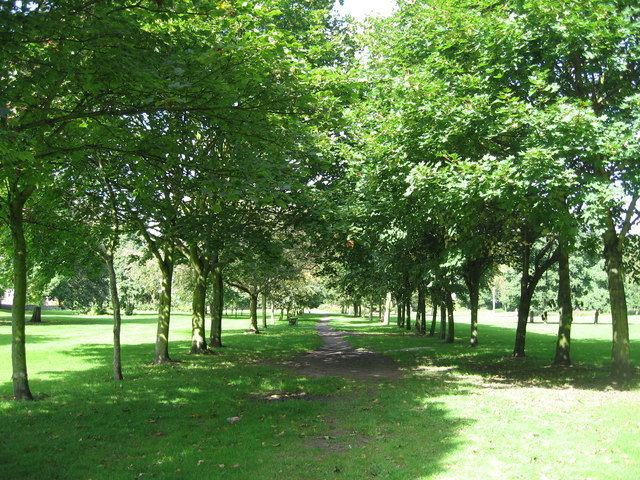Type public Area 14 hectares Phone +44 151 443 3682 | ||
 | ||
Hours Open today · 7AM–9:30PMTuesday7AM–9:30PMWednesday7AM–9:30PMThursday7AM–9:30PMFriday7AM–9:30PMSaturday7AM–4:30PMSunday7AM–4:30PMMonday7AM–9:30PM Similar Hough Green Park, Castle Park House, Blackleach Country Park, Moss Bank Park - Bolton, Otterspool Promenade | ||
History of court hey park
Court Hey Park is a park in Bowring Park, in Merseyside on the outskirts of Liverpool and is home to the National Wildflower Centre.
Contents
Events in court hey park
History
Court Hey Park can be traced all the way back to 1783 when it was a farmer's field forming part of the estate of Lord Derby. The grounds were acquired by Robertson Gladstone (1805–1875) who was elder brother to the four times British Prime Minister William Ewart Gladstone.
Robertson Gladstone married Mary Ellen Heywood-Jones in January 1836 and the mansion house, Court Hey Hall, was built the same year in the 60-acre (240,000 m2) walled estate.
Gladstone, who was Director of the Liverpool-Manchester Railway acquired the original sandstone railway sleepers once traversed by George Stephenson's world famous locomotive 'The Rocket' in 1842 when the railway was renovated. These were used to edge the main drives of the park and are still prominent today.
The hall remained in the hands of the Gladstone family under the death of one of Robertson Gladstone's sons in 1919. Following this, the estate was bought by J. Bibby and Sons, a cattle food manufacturer. They established an experimental poultry and cattle foods farm and proceeded to develop the park as a centre for sport and recreation.
Recreation continued alongside a printing business, which was established in the grounds in 1923. Football, tennis, bowls and cricket became familiar sights around the park while the hall was used for ballroom dances, billiards and other social activities.
During the Second World War, part of the estate including the old Stable Block was requisitioned by the Ministry of Agriculture Fisheries and Foods and used as quarantine station.
From the late 1940s Liverpool Pembroke, an athletic and cycling club also used the park as a base until redevelopment forced them to move in the 1960s.
The hall and grounds fell into disrepair and in 1951 the company sold the estate to Huyton-with-Roby Council. The hall was demolished in 1956 and part of the land sold to Vernons Pools. A housing estate was established which is now called the Grangewood/High Beeches Estate. The original entrance to the Vernons factory runs alongside the Eastern side of the estate.
All of the original stable buildings were renovated and sections of the original walled garden were used as part of the National Wildflower Centre in 2000. The Friends of Court Hey Park are now based in the stable block.
